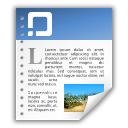| dc.contributor.advisor | Landers, Jane G. | |
| dc.contributor.author | Doster, Stephen | |
| dc.date.accessioned | 2009-06-12T19:09:39Z | |
| dc.date.available | 2009-06-12T19:09:39Z | |
| dc.date.issued | 2009 | |
| dc.identifier.uri | http://hdl.handle.net/1803/3101 | |
| dc.description | This paper examines the creolization of various slave leisure activities from the most easily cross-culturally transportable (i.e., storytelling and dance), to forms that required special apparatuses or venues (e.g., horseracing). A PowerPoint presentation is also included. Written for MLAS 270 33: New Methods, New Discoveries, and New Interpretations in Slavery Studies with Prof. Jane Landers, Spring 2009. | en |
| dc.description.abstract | Leisure, the escape from the tedium of everyday existence, is found in all cultures including those in which slavery exists. At first glance the terms "slavery" and "leisure" may seem to be contradictory, mutually exclusive terms. However, the need to mentally and physically break the bonds of one's circumstances, albeit temporarily, applied equally if not more so to Caribbean and North American slaves of African descent. The creolization of slave leisure activity forms began almost immediately upon their arrival in the Americas, some of which represented a continuation of African traditions while others were adopted from white society. A few forms of leisure even afforded slaves an opportunity to elevate their status relative to that of fellow slaves, compete on an equal footing with whites, and in some instances win their freedom. This paper will examine the creolization of some forms of slave leisure activities from the most easily cross-culturally transportable, to forms that required special apparatuses or venues. It is not intended to be an exhaustive inquiry into all forms of slave leisure. The time period covered will be from the earliest days of the transatlantic slave trade to Emancipation. Finally, there will be some discussion of the impact of slave leisure on North American and Caribbean culture that continues to this day. | en |
| dc.language.iso | en_US | en |
| dc.publisher | Vanderbilt University | en |
| dc.subject | Creolization -- Caribbean Area | en |
| dc.subject | Creolization -- United States | en |
| dc.subject.lcsh | Leisure -- Caribbean Area -- History | en |
| dc.subject.lcsh | Recreation -- United States -- History | en |
| dc.subject.lcsh | Recreation -- Caribbean Area -- History | en |
| dc.subject.lcsh | Slavery -- Social aspects -- United States | en |
| dc.subject.lcsh | Slavery -- Social aspects -- Caribbean Area | en |
| dc.subject.lcsh | African Americans -- Social life and customs | en |
| dc.subject.lcsh | Slaves -- United States -- Social life and customs | en |
| dc.subject.lcsh | Leisure -- United States -- History | en |
| dc.subject.lcsh | Caribbean Area -- Civilization -- African influences | en |
| dc.subject.lcsh | United States -- Civilization -- African influences | en |
| dc.subject.lcsh | Cultural fusion -- Caribbean Area -- History | en |
| dc.subject.lcsh | Cultural fusion -- United States -- History | en |
| dc.subject.lcsh | Blacks -- Recreation -- Caribbean Area -- History | en |
| dc.subject.lcsh | African Americans -- Recreation -- History | en |
| dc.subject.lcsh | Slaves -- Recreation -- Caribbean Area -- History | en |
| dc.subject.lcsh | Slaves -- Recreation -- United States -- History | en |
| dc.subject.lcsh | Blacks -- Caribbean Area -- Social life and customs | en |
| dc.subject.lcsh | Slaves -- Caribbean Area -- Social life and customs | en |
| dc.title | The Importation, Adaptation, and Creolization of Slave Leisure Forms in the Americas: 1600 to 1865 | en |
| dc.type | Paper | en |
| dc.description.college | College of Arts and Science | en |


